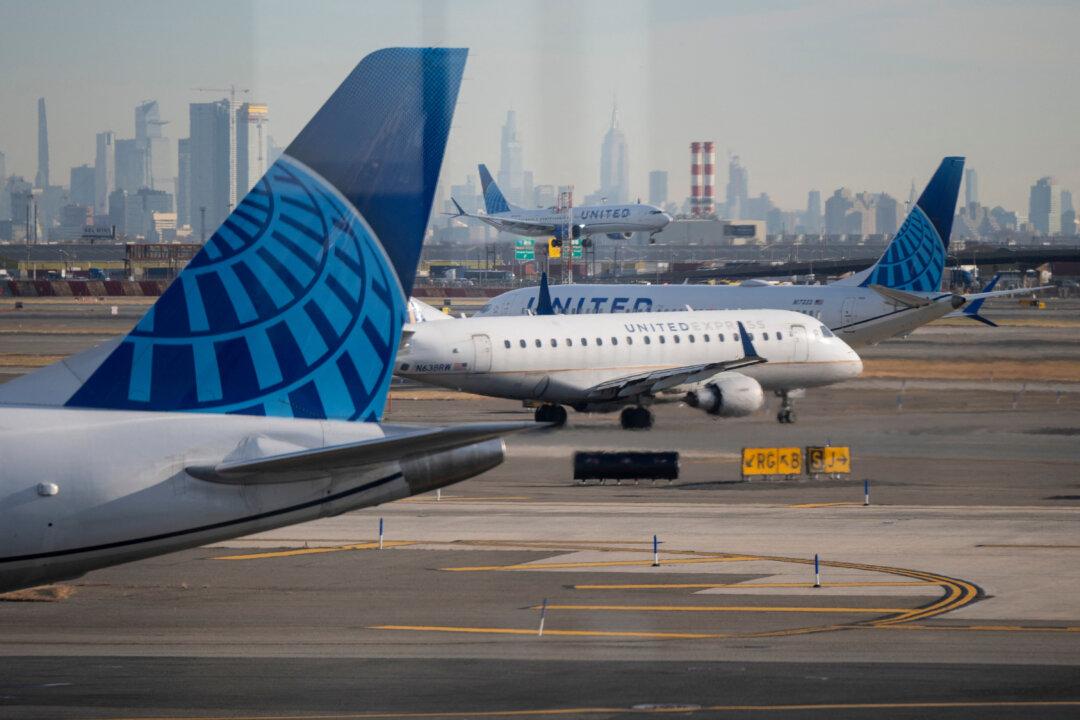Despite reporting better-than-expected first-quarter results, United Airlines warned of a potential recession and offered an unusual dueling outlook for the rest of 2025 based on the economy’s direction.
Considering the challenging environment, the Chicago-based airline said on April 15 that it will remove four percentage points of scheduled domestic capacity starting in the third quarter. That plan, dubbed United Next, also includes adjustments to the airline’s fleet utilization rate, including reductions in off-peak flying on lower-demand days.
The airline expects to continue this product approach heading into the fourth quarter. The plan includes moving forward with retiring 21 of its most expensive aircraft earlier than previously planned.
“[A] single consensus no longer exists, and therefore the company’s expectation has become bimodal—either the U.S. economy will remain weaker but stable, or the U.S. may enter into a recession,” United said.
In scenario one, United maintained its yearly outlook of $11.50 to $13.50 per share if the economy remained stable. In scenario two, the company said that the outlook could fall to $7 to $9 per share if a recession occurs. It added that the company believes “it is impossible to predict this year with any degree of confidence.”
United’s capacity and cost-cutting measures came as U.S. domestic carriers face softer domestic demand heading into the upcoming vacation season. In March, Southwest Airlines and American Airlines noted in revised outlooks that declining government travel impacted their margins and capacity.
Bank of America analyst Andrew Didora told The Epoch Times that the volatility and macro uncertainty will test the airline industry in the upcoming months and the rest of 2025. Due to weakening government demand following the Department of Government Efficiency’s job and spending cuts, the airline industry is expected to finish March with pricing at its lowest levels in several quarters, he said.
“While the events of today may change things, we know that uncertainty is difficult for airlines,” Didora said.
For the quarter that ended March 31, United reported profits of $387 million, or $1.16 a share, compared to a year-ago loss of $124 million, or 38 cents a share. Its adjusted earnings of 91 cents per share, which include one-time gains related to aircraft sale-leasebacks, easily beat Wall Street expectations of 74 cents per share, according to FactSet.
United’s first-quarter revenue also rose 5.4 percent to $13.2 billion compared with $12.5 billion a year ago. That nearly matches Wall Street expectations of $13.23 billion, according to a survey of analysts by FactSet.
Among key first-quarter highlights, United saw a 3.8 percent increase in passenger totals to 40.8 million, up from 39.3 million a year ago. Revenue passenger miles (RPM), a key industry metric showing the miles traveled by paying passengers, also rose 3.6 percent to 59.5 million. That compares to 57.4 million in the first quarter of 2024.
However, the Chicago-based airline reported passenger revenue per available seat mile (PRASM) of 17.58 cents and cost per available seat mile (CASM) of 16.77 cents, down 0.1 percent and 3.4 percent, respectively, compared to a year ago. Analysts say airlines with higher PRASMs generally have more control over price.
In after-hours trading, United shares were up 5.87 percent at $70.94 on the Nasdaq Stock Exchange. United closed the April 15 trading session up $1.31 at $67, as more than 12.2 million shares changed hands. The company will hold its first-quarter earnings conference call on April 16 at 10:30 a.m. ET.







